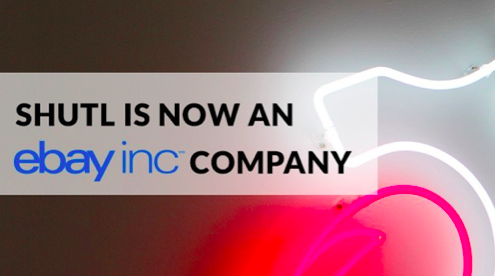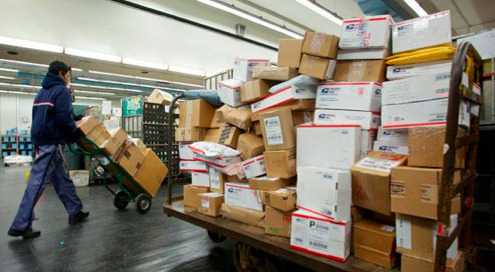By Arie Shpanya, CEO WisePricer

A few months ago, eBay announced their acquisition of UK based startup Shutl, expanding its eBay Now same-day delivery. “Traditional retail isn’t going away. But it is transforming,” said Devin Wenig, President of eBay Global Marketplaces. The company said that they have plans to expand to 25 markets by the year’s end. The eBay Now service is currently only available in a handful of markets. According to Shutl’s blog post announcing the partnership, “Approximately 75% of commerce happens within 15 miles of the consumer’s home. E-commerce is quick and convenient, two things that delivery is not. Together with eBay, we believe that we can transform this market and fulfill our mission.”

The Economics
Until the acquisition, the deliveries were handled by couriers employed by eBay. This type of on-demand, personal service has immense potential but was it sustainable or scalable? It’s highly likely that the delivery fees didn’t come close to covering the costs and were eating into the margins. However, this recent acquisition makes it possible to leverage economies of scale. Daphne Carmeli, founder of Shutl rival Deliv says, “It’s sort of a difference of a private taxi to an airport shuttle.” Even so, it’s not about making money on the delivery service. It’s more of a loss leader strategy and about creating a seamless shopping experience for consumers to grow loyalty over time (and of course collecting massive consumer data along the way — always a plus).
Now, Now, Now
For the consumer, it’s one step closer to instant gratification. On-demand services are all the rage. Uber has been incredibly successful with their on-demand ride services (and ice cream). However, there’s a decent amount of research supporting that customers actually care more about free shipping than same-day shipping. It’s not a “must have” option, but consumers do love options, so it’s definitely nice to have the choice. Time will tell how much value same-day or even same-hour delivery services will add.

What About The Small Fishes In The Pond?
For smaller retailers already struggling to compete with these retail giants, on-demand delivery is not a feasible option. They simply don’t have the resources or technology to support the logistics of such an option. How can they compete on that kind of delivery schedule? Geography is another limiting factor, even for the e-Commerce giants who have only experimented in major metropolitan markets. If the trend catches fire and becomes more commonplace, SMBs will suffer. They key may be to strengthen their niche position and value proposition in other areas outside of shipping options.
A Growing Trend
Retailers are embracing courier services, especially in the past year. Other than eBay, market leaders such as Amazon, Google, and Walmart have already been experimenting with this shipping model, but have expanded scope recently.
- Arguably, Amazon started it all. There’s speculation that Amazon is preparing for a massive expansion of their same-day delivery. They are investing heavily in building warehouses and distribution centers — not just in cheap, out of the way locations, but near major metropolitan areas. They are bringing the inventory closer to key delivery zones. Amazon is also expanding their client reach by partnering with manufacturers through its Vendor Flex program — they manage the e-Commerce and logistics for the manufacturer, giving Amazon even more warehouses to work with and making shipping faster and cheaper.
- Last month, Google launched Google Shopping Express in the San Francisco Bay Area. Like eBay, Google allows customers to choose items and a courier will be sent out to purchase and deliver the goods. The king of data, Google knows it’s really about capturing customer information, not about profit (they currently offer a free trial for six months of free same-day delivery).
- Wal-Mart is testing its own delivery programs through its Walmart To Go offerings. They have been trying same-day delivery on groceries in select test markets for several years, but only in the past year have they expanded to general merchandise. UPS handles the deliveries; the customer pays around $10 (although they seem to be experimenting with price points) and there is no minimum purchase required.
The “Big 4” have made it clear that they see potential in this type of offering on a larger scale, and a key similarity is that (short-term) profit is not the goal for this venture for any of them. It’s not about the money — it’s about adding value and growing loyalty through convenience and/or collecting customer data. Other key retailers will follow suit (if they are able), and we can also expect third party companies to try and imitate this type of model. History has shown that Amazon tends to set off a chain reaction. For example, ShopRunner, backed by Chinese e-Commerce giant Alibaba, has emulated Amazon Prime by helping large retailers offer free two-day shipping. There’s no denying that the on-demand delivery space is growing. It’s a form of multi-channel retailing that kind of bridges the gap between online and brick-and-mortar retail.
Will the cost and difficulty of executing same-day delivery be worth it?
Arie Shpanya is the Founder & CEO of WisePricer, a dynamic pricing engine that lets retailers intelligently monitor product pricing, analyze in-depth price history analytics, compare pricing strategy to competitors, and compete wisely by re-pricing products in real-time. He has extensive experience in e-Commerce and online retail, and has previously founded and led a full-service e-commerce consultancy called imOnline. Arie also consults for a number of early-stage e-Commerce Internet start-ups as well as for






